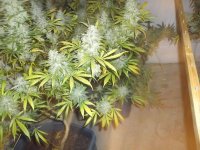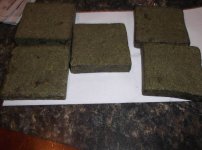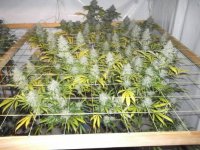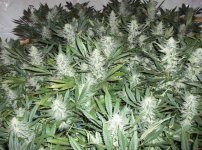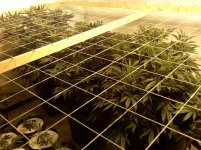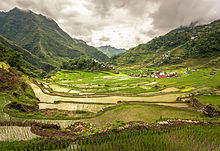problem with using chicken shit wiring lol is buds grow into it its a cock suker come harvest time cause you litterally got to rip them apart , i prefer string takes a little time going from one end to other keeping it tight you let off lol and petty much start all over but string is the bomb cause once harvest time comes you cut string and drop you table you at plants now if any buds grown into string simple very easy pull string out of it with wire again your fucked
looking good weird one pic looked like scrog was more support then actual table "__"
I do scrog its all i do did 5 plant 4.75 pound dry 2k
then went 12 plant 5 x 15 scrog table 3k 7 3/4 pound dry plus 3/4 pound of HASH so really 8.5 pounds of goods

